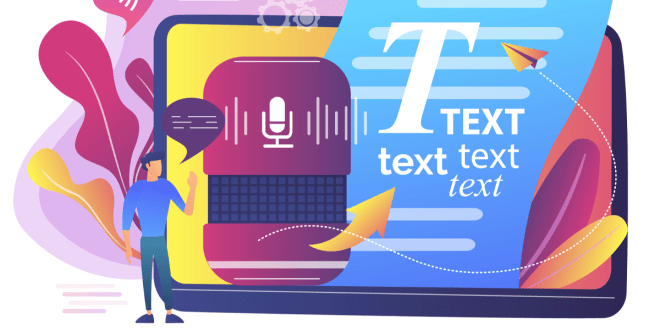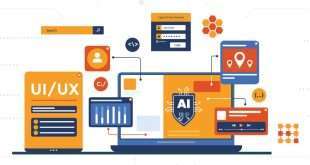Welcome to a realm of web accessibility that transcends the traditional limitations of screen readers. In today’s digital age, ensuring a website’s inclusivity for all users has become a moral imperative and a legal requirement. The conventional reliance on screen readers, though a significant step forward, is only the beginning. In this article, we dive into the cutting-edge innovations of next-gen web accessibility tools that are shaping the future of HTML website accessibility. Let’s embark on a comprehensive journey to empower everyone with equal access to the online world.
Understanding the Evolution of Web Accessibility
Web accessibility has come a long way since its inception. Initially, screen readers paved the way for a more inclusive online experience for visually impaired users. However, web accessibility goes beyond catering to the visually impaired. It encompasses providing seamless access to information for people with cognitive disabilities, motor impairments, and other challenges. Modern web accessibility solutions aim to address these diverse needs by adopting a holistic approach.
AI-Driven Accessibility Tools: Breaking Barriers
Unlocking new possibilities, artificial intelligence has opened doors to innovative accessibility solutions. AI-powered web accessibility tools leverage advanced algorithms to analyze web content and automatically make it more accessible. These tools can detect and address various accessibility issues, such as missing alt text, poor color contrast, and improper heading structures, in real-time.
Natural Language Processing for Enhanced Accessibility
Mastering natural language processing (NLP) has become a game-changer for web accessibility. NLP-based tools can comprehend the context and semantics of website content, allowing them to create more accurate and contextually relevant alternative text for images and videos. Additionally, NLP-driven accessibility tools can identify complex language patterns, simplifying content for easier comprehension.
Semantic HTML: The Backbone of Accessibility
Understanding the significance of semantic HTML is essential for creating accessible websites. Semantic HTML enhances website structure and assists screen readers and other assistive technologies in comprehending content accurately. By incorporating semantic elements like headings, lists, and landmarks, web developers can ensure a more seamless browsing experience for users with disabilities.
Cognitive Accessibility: Empowering Users
Next-gen web accessibility tools are increasingly focusing on cognitive accessibility, recognizing that not all disabilities are visible. These tools strive to create a clutter-free interface, reduce distractions, and provide clear navigation. By understanding the challenges faced by users with cognitive disabilities, developers can tailor websites to suit their unique needs.
AR and VR: Revolutionizing the Web for Disabilities
The integration of augmented reality (AR) and virtual reality (VR) technologies has shown tremendous promise in enhancing web accessibility. For visually impaired users, AR can provide audio cues, while VR can create immersive experiences with spatial audio. These technologies offer a transformative approach to accessibility, enabling users to interact with digital content like never before.
Cross-Platform Compatibility: Accessible Everywhere
Ensuring accessibility across various devices and platforms is crucial for reaching a wider audience. Next-gen web accessibility tools prioritize cross-platform compatibility, guaranteeing that users can access content seamlessly whether on desktops, mobile devices, or wearable tech.
User Testing and Feedback Loops
Solving accessibility challenges requires continuous improvement, and user testing is at the heart of this process. Incorporating feedback loops allows developers to understand the actual user experience and make necessary adjustments to enhance accessibility continually.
Leveraging Machine Learning for Inclusive Design
Inclusive design goes beyond compliance; it seeks to create an experience that is intuitive and enjoyable for all users. By leveraging machine learning, developers can gain insights into user behavior and preferences, tailoring websites to cater to specific accessibility requirements effectively.
Final Words: A Future of Inclusivity
The future of web accessibility lies in embracing next-gen tools and technologies that cater to a diverse audience. From AI-driven solutions to AR and VR integration, we are witnessing a revolutionary transformation. By prioritizing user experience and leveraging the power of technology, we can build a digital world that is truly inclusive and empowers every individual to explore, interact, and thrive online.
Commonly Asked Questions
Q1: Are screen readers becoming obsolete with next-gen web accessibility tools?
A: While next-gen web accessibility tools offer significant advancements, screen readers remain crucial for certain user groups. The combination of both technologies ensures a more comprehensive and inclusive web experience.
Q2: How can AI-driven accessibility tools detect and fix website accessibility issues?
A: AI-driven tools analyze web content using sophisticated algorithms to identify potential accessibility barriers. They can automatically add alt text to images, adjust color contrast, and optimize heading structures, among other tasks.
Q3: Can AR and VR technologies truly enhance web accessibility for users with disabilities?
A: Yes, AR and VR technologies provide innovative solutions, offering audio cues and immersive experiences that enhance web accessibility for visually impaired users, creating a more inclusive digital environment.
Q4: How can developers effectively implement cognitive accessibility on websites?
A: Developers can prioritize cognitive accessibility by reducing distractions, using clear and straightforward language, and providing intuitive navigation. Consideration for cognitive disabilities ensures a more user-friendly experience.
Q5: What role does cross-platform compatibility play in web accessibility?
A: Cross-platform compatibility ensures that websites remain accessible across different devices and operating systems, enabling a broader range of users to access and interact with web content seamlessly.
 webfily
webfily



